NBS Fall Conference-
Details Here
From the Chair
by Corey Shelsta, NBS Section Chairperson
 Greetings to all! I hope you have had a relaxing and productive summer and I look forward to seeing many of you at the annual NBS Fall Conference September 16 and 17. As summer is winding down, I have been reflecting on my journey in theatre through the years and beginning work on planning for a new theatre facility. I will be the first to admit that I am old and set in my ways. I have been working in theatre since I was probably in 8th grade. The first lighting control system I used in my high school looked a lot like this one:
Greetings to all! I hope you have had a relaxing and productive summer and I look forward to seeing many of you at the annual NBS Fall Conference September 16 and 17. As summer is winding down, I have been reflecting on my journey in theatre through the years and beginning work on planning for a new theatre facility. I will be the first to admit that I am old and set in my ways. I have been working in theatre since I was probably in 8th grade. The first lighting control system I used in my high school looked a lot like this one:
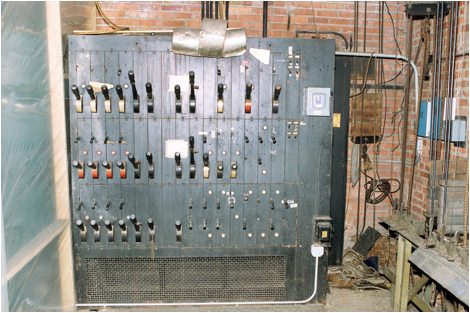
If you wanted to move a group of handles you put a piece of 2x4 across them. You also had to be very careful not to touch handle #9 and the metal of the cabinet at the same time or you got a heck of a shock. I recall letting the new freshmen who came in learn that lesson on their own sometimes.
When I started college I thought I was in the most high tech theatrical environment I could imagine when I walked into the booth (an actual control booth, not just a big wall of handles back stage left!) and saw this:
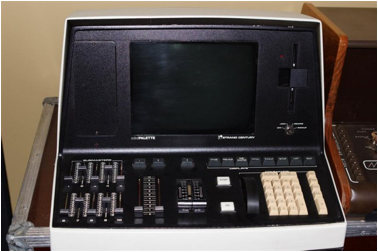
A computer that controlled the lights! Wow! I was amazed. And I could program cues, save them on a floppy disk and play them back the same every time we did the show. No guessing on times or levels. It was revolutionary for me. On a side note, I spent a few minutes looking at the picture of the Strand miniPalette shown above. I can still remember what many of those buttons do. That muscle memory you build when you are programming never quite goes away.
Lightning instruments have changed a lot too. And over the years I have used most of them in one theatre or another. Those early ERS units with their asbestos cords that always left me wondering how a 1kW lamp could put out so little light.
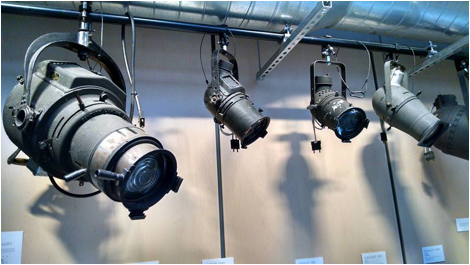
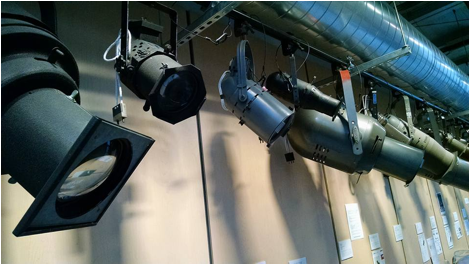
And then a new kind of lighting instrument entered my life:
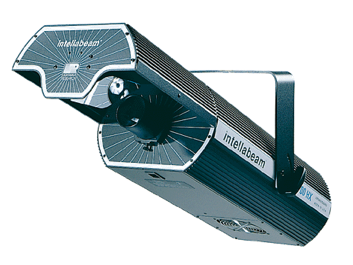
And the first time I got to use a few of these in a show was so cool! A light that moved! And changed color! And changed gobos! Of course I can find a use for gobo that has four squares in cyan, magenta, yellow and white! It weighs a ton and is really loud? Well that’s okay, hang ‘em over the stage, the actors can just sing louder.
Flash forward to the present day. I sit at the tech table at an Ion console that looks like it could drive a spaceship. Highly efficient tungsten halogen units light my stage, reasonably quiet scrollers shift color in my side light positions, moving head LED wash units give me lots of colors anywhere I want them to be on the stage. Life is good. Sure I have extra power and control cable for the scrollers and the intelligent fixtures, but I still plug those ERS and fresnels into a circuit that connects to a dimmer humming away in the dimmer room, just as I always have for the last 30 years of my career. But now it seems as if the way I have always thought about lighting is on the verge of change.
I am currently involved in one of those unique and often once-in-a-lifetime projects. We are building an expansion to our performing arts center that includes a new proscenium theatre. I have been in countless design meetings and have gotten to have quite a bit of input in the design of the space. It has been a great experience as well as a learning one. We have a great team of architects, consultants and engineers and they are very receptive to our input. But there is something very daunting about making decisions for the spaces that will be used for decades to come.
Several of us took a trip to the ETC factory in Middleton, Wisconsin last week to begin looking at how the lighting systems in the various spaces might work. We toured the factory and looked at various products for stage lighting, house lighting and rigging. We spent quite a bit of time looking in depth at how systems are structured and the differences in a conventional system vs. an LED system. I went on this trip having a pretty good idea of what I wanted the lighting system to be, and left with far more ideas and options than I had imagined.
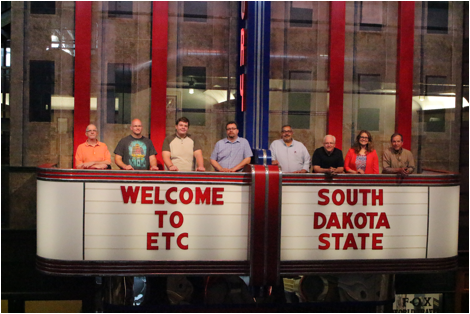
Without getting into boring and long winded specifics, a 48 circuit 400 amp relay panel to run an all LED system costs SIGNIFICANTLY less than 288 dimmers in 3 racks with 600 amps each. Enough of a cost difference to actually make the cost difference of purchasing the LED fixtures instead of incandescent fixtures balance out. I had been thinking we would have the dimmers and circuits that I have always used, and throw in a few LED fixtures for some color washes from the sides or top. But now that it is a possibility, should I look at a complete LED system?
LED fixtures chain together. Eight to ten can be run on a single circuit. They dim themselves. I knew this going in to this process, but when I was shown how a raceway on lighting position only needed four constant power circuits instead of twenty or more dimmable ones, I literally felt my head begin to explode. And then they change color. You don’t need to climb up there to put gel in them. No gel? I knew that of course, I have LED units, but this was the first time I began to envision a theatre with ONLY LED units. I really would not need any gel. Wow. Just wow. No lamps to change? Yes, sign me up for that convenience too.
This is a big leap for me to take. It will change the way I design. It will change the way I teach lighting. And I need to make some decisions now that will influence the way students in ten, fifteen, twenty or more years out use our space. Are LED units perfect now? No, of course not. But look at how much better they are than just five years ago. What will another five years bring us? Will making the leap now be beneficial for future students? Or should I hang on to the tried and true dimmer per circuit method and create a hybrid system? I don’t know. But it sure is an exciting time.
P.S. While I don’t want to use this column to promote one manufacturer over another, I would say that having ETC so close by in Wisconsin presents a great educational opportunity. They are happy to give tours to groups of students interested in theatre technology. Being able to see how the products we use every day are made and meet the people who make them is a great experience. I would encourage the students and educators in our region to look into this. As I said at the start of this, I’m old and I’ve seen it all, but I learned an awful lot spending a day with the folks at ETC. [ ]
